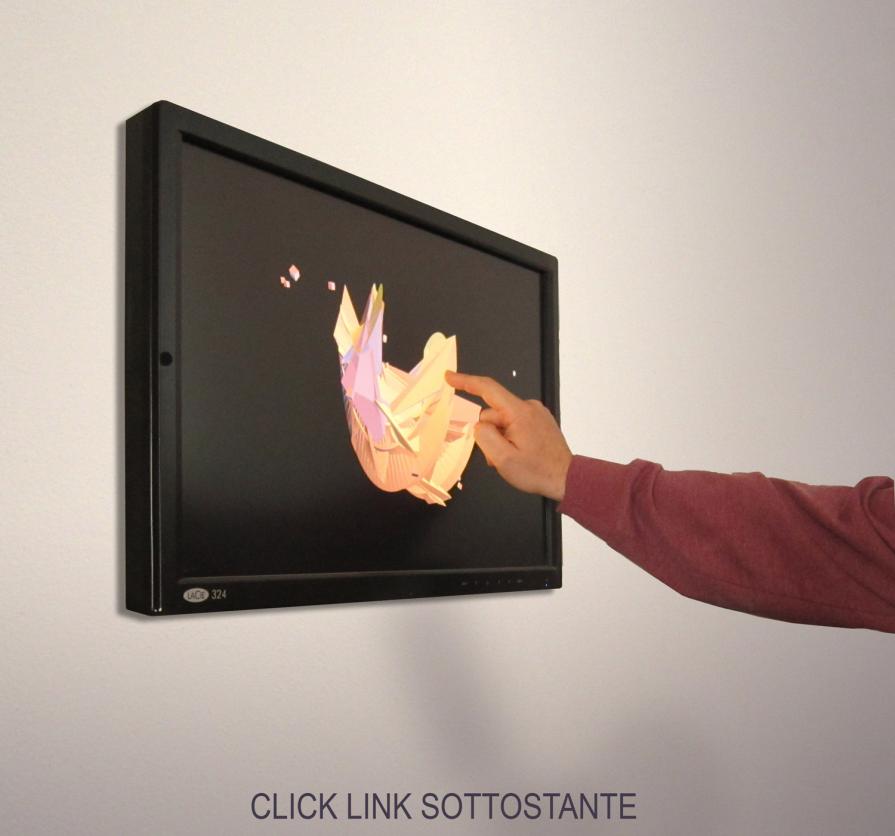ruined satellite
FULL DIGITAL
The presented work is a virtual image / space in an html file, so with the same accessibility of common web pages. By clicking on the link, you open a real window through which you can move, rotate around the object and (using a touch screen or, more slowly, with the mouse wheel) zoom in and get in.
The work has in its potentiality the multiplicity, the user can simply read it as an image and view it or change its angle and can choose the version it prefers, saving the new version with a stamp. But can also read it as a direct experience, turning around, setting different levels of diving, exploring it, discovering an infinite world that nobody, even the author, has ever seen.
The work was done by forcing the software that generates the images. In these works the element of casuality assumes a fundamental value. In fact, casualty points out more than any other intervention, the aesthetics of this instrument: unknown potentials, novelty, power, simplicity, impersonality, inequality.
SUPPORT - What do we do in home time? What do we (or at least most people) do at work? What do we always carry behind us and do we constantly observe and consult?
The answer to these three questions is unique: we are in front of a screen.
Today the screen is already the main tool of communication, not to say of our whole life.
Most of the information comes from there and even Art already passes and goes over there.
The idea of printing a digital work is in itself an erroneous reasoning 1) because it considers the digital image as a surrogate of the physical image 2) because it does not respect the native format of the work using light colors and not The pigment and therefore the print should be considered a copy totally unmatched by the original 3) because the paper is a very limited tool compared to the digital potentials; 4) to end a paper image is far more difficult to find and use .
DIMENSION - Digital work that fully exploits the potential of the instrument is multidimensional from all points of view.
A) It is from the point of dimension in the narrow sense as it does not have a specific measurement, either in cm or in pixels. Vectors are free from measurements and new technologies allow the image to always adapt to support.
The image is not affected by the fact that you are using a small smartphone or a 100-inch screen.
B) It is even more important that it can be multidimensional even in the ratio between the 2 and the 3 dimensions. A full digital work is always two-dimensional, because it is on a screen then on a flat surface, but it can also be three-dimensionally large, because it can create a virtual space where you can navigate and move as in a deep space.
C) The last multidimensionality of digital is the temporal one. Time-honored works (music, video, performances ...) normally use time in a traditional way, setting a compulsory path, but digital can arrange time so that it can be totally managed by the user, as indicated in point next.
















Comments 0
Say something